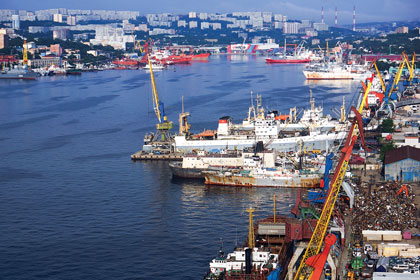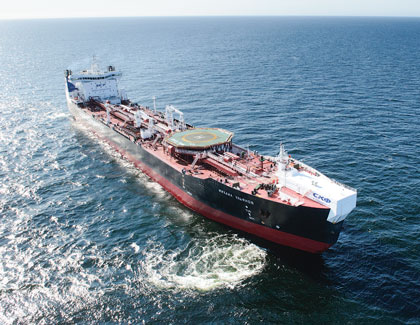Regional focus
E. Gerden, Contributing Writer
Russia is considering a significant increase in LNG exports to Africa and the Middle East over the next several years, according to the Russian Ministry of Energy. The increased exports will be part of the Russian government’s plan to diversify its energy exports and reduce its economic dependence on Western countries. This strategy also falls within Russia’s plan to supply 15% of the global LNG market.
The first of these new supplies may be produced as early as 2018. Together with domestic natural gas monopoly Gazprom, the Russian government is completing construction of the Vladivostok and Baltic LNG terminals. The facilities will be located at opposite ends of the country, and their production will be targeted for the Middle East and North Africa markets.
The Vladivostok LNG plant, which will be located in the Primorye region (Fig. 1) in the Russian Far East, has a design capacity of 15 metric MMtpy of LNG. The first phase of the project will have a capacity of 5 metric MMtpy and is scheduled for launch in early 2018. The Vladivostok terminal will source gas from fields in Sakhalin, Yakutia and the Irkutsk region of Russia.
 |
|
Fig. 1. Russia’s Vladivostok seaport, where the Vladivostok LNG terminal will |
ME gas demand continues to rise. LNG exports from the Vladivostok terminal were originally planned to be sent to Asia-Pacific, but changing market conditions and growing competition from Qatar and Australia have forced the project’s developers to target Middle Eastern customers, instead. At present, the Russian government is in negotiations with Kuwait and Bahrain for supply agreements. According to statements by Nasser Abdullah Saleh, deputy managing director of Kuwait Petroleum Corp., Kuwait plans to purchase up to 1.5 metric MMtpy of LNG from Russia, beginning in 2017.
Kuwait has vast reserves of crude oil; however, its natural gas production is too small to meet its needs. As a result, the country remains dependent on LNG imports for both power generation and petrochemicals production. To this end, Kuwait’s government aims to sign long-term contracts of up to 15 years to import
6 MMtpy–7 MMtpy of LNG after 2020.
Meanwhile, annual gas production in Bahrain is estimated at 16 Bcmy of gas, while its consumption is 14 Bcmy and growing. The Bahrain government had planned to source LNG supplies from Qatar and Iran; however, talks with both countries have stalled due to political differences. According to Russian media reports, LNG supplies from Russia to Bahrain will initially range from 1 MMtpy–1.5 MMtpy, with the possibility of increases over the coming years.
African LNG market takes hold. In addition to the Middle East region, Russia hopes to increase its presence in Africa’s LNG market (Fig. 2). As in the Middle East region, demand for gas in Africa has significantly increased in recent years and will continue to grow over the next several years, according to analysts’ forecasts. This growth will be mainly due to ongoing developments in African nations that have already resulted in greater demand for energy resources.
 |
|
Fig. 2. One of Russia’s largest LNG tankers, Mikhail Ulyanov, will supply LNG |
The majority of Russian LNG supplies to Africa will be sent from the Baltic LNG plant, which is being developed by Gazprom on the Gulf of Finland, near St. Petersburg. Under the terms of the project, the plant will have two trains with a total capacity of 10 metric MMtpy of LNG, with the option to later add another train to increase capacity to 15 metric MMtpy. The plant is expected to cost approximately $18.5 B. Among Gazprom’s potential partners are Royal Dutch Shell, Mitsui and Mitsubishi.
According to initial plans by Gazprom and the Russian government, the majority of supplies from Baltic LNG were to be sent to the EU and Latin America. However, due to ongoing tensions between Russia and the West, as well as ever-tightening competition in Latin America’s LNG market, future supplies from Baltic LNG have already been re-oriented to Africa. The Russian government sees significant potential for expanding its presence in the region. Specifically, it will target northern African countries, including Egypt and Morocco. The Russian Energy Ministry expects Egypt to become one of the largest LNG-consuming nations in Africa over the next several years.
At present, the annual volume of gas output in Egypt is estimated at 55 Bcmy, while consumption is approximately 52 Bcmy–53 Bcmy and growing faster than production. The country may face a shortage of gas over the coming years, which will limit its exports as it increases its LNG imports from abroad. According to statements by state-owned Egyptian Natural Gas Holding Co. (EGAS), Egypt plans to import between 110 and 120 cargoes of LNG in 2017, some of which will be supplied by Russia.
Meanwhile, the Moroccan government has officially announced its intent to begin importing LNG in 2018. Import volumes are expected to reach 2 metric MMtpy initially, with plans to boost this total to 5 metric MMtpy by 2025. As part of this plan, an LNG terminal will be built at Jorf Lasfar, a deepwater port south of the city of El Jadida on the country’s Atlantic coast. The project also involves building a regasification plant, a jetty, pipelines and up to four gas-fired power plants around the country. Investment for the project is estimated at $4.6 B. According to Morocco’s energy minister, in addition to Gazprom, Shell is among the potential bidders, as well as companies based in France, Spain and the US.
Elsewhere in Africa, the Tunisian Ministry of Energy expects that the country will face a shortage of energy around 2020. Local energy demand will need to be met by LNG supplies from abroad. Although opportunities exist for developing new gas fields in Tunisia, those reserves are limited and uncertain. To date, a significant share of the country’s energy imports in the form of gas has been supplied from Algeria. However, due to an increase in energy consumption in recent years, the Tunisian government is considering alternative sources for gas supplies.
The Middle East and Africa will continue to be the most promising regions for LNG demand growth in the coming years. The Russian energy industry is ready to supply these regions with gas supplies from its existing and upcoming LNG terminals. GP




Comments